Works every time. Especially the first time.
I heard a story once of a surefire method of to make a million, fast. I wanted to research if this was truth or fable, but decided against it. For some reason I do not want to ruin the legend with heaps of stats and data. Knowing what a statophile I am, I resisted the urge to fire up the Google machine and rather focus on finding the moral the story. Oh, mon amis, this story is in full supply of morel.
I Imagine this story to take place in the late 50s, early 60s. In America. Why America? Cos in my mind it flickers with the smoky sepia of a noir film of that era. Was the economy in an upswing? Or was it a time of uncertainty like exists in the world right now? I do not recall the original tale giving details as to the where and when. The details are only relevant insofar it colors the mien in my imagination.

The story goes like this: In a large city, probably New York, an unknown person took out a double page advertisement in the most popular newspaper of that era. To do this is not cheap, but hey, it takes money to make money. The heading of the advert read:
” How To Make A Million Fast! ”
(This was likely the great grandmother of what we today call “click-bait”. Just as you could not resist to click this blog post, just so, many in that day could not resist the curiosity. Please read on.)

The print got smaller as the details unraveled. Under the heading there was a paragraph of assurance. Few words of inspiration in the second paragraph. And toward the end, a call to action.
“Send a self-addressed envelope with five dollars to this P.O. Box and in 30 days the secret to becoming a millionaire will be revealed to you. “
Surly, right at the bottom, there was more fine print and caveats stating that results may vary. That becoming a millionaire is a fluid process, and that being on the way of becoming a millionaire is almost like being one. Bla-bla-bla.
30 Days went by. The answer to the question was revealed in the form of many; not sure how many, self addressed envelopes that all arrived to their destinations on the very same day. The reactions to the reveal could be placed in three categories. 1) People that perceived it to be a gag. This category had a spectrum ranging from some feeling that it was a delightful joke. To others raging that it was done in very poor taste. A substantial amount of people took it serious enough to gamble with the required five dollars, hoping for the best – more about them just now. The third category, a minority consisting of curious investors, journalist and academics who became obsessed with the outcome of this experiment.
So this is how it happened.
Without exception the self-addressed envelopes that once was accompanied with a five dollar bill was returned with a single page letter in its stead. The letterhead looked official and the first paragraph had polite words thanking the recipient for the leap of faith. Be it only a little five dollar leap.
In the second paragraph the letter got right down to brass tax.
How to make a million fast. The instructions are as follow. Keep in mind that it takes money to make money. Also that timing and execution will contribute to the measure of success. The most surefire method of becoming a millionaire is to procure the funds; either by loan or by one’s own wealth, a sufficient amount to take out a double page advertisement in a reputable newspaper. One with a very high circulation number. This works especially will in a very large city…..

P.T Barnum was reported to say: There is a sucker born every minute.
Neither am I looking up this quote by Mr. Barnum. It would not surprise me much at all if this was a stunt originally pulled by Barnum himself.
Obviously, this can only work once. Or can it? Remember the third category? The people that became obsessed with the effectiveness of this stunt? They that wanted to know if the mysterious advert raised a million. Maybe ten times that much? Maybe only a tenth. Would you be at all surprised to learn that many tried the same stunt since?
I assure you many have tried! Maybe disguised in different forms, but it happens more than you know.

Calling BS on the whole thing.
In its bassist version there are the unsolicited emails advising you on how to make your website perform better in search results. I’ll sooner believe that I had an rich Nigerian uncle who met his demise, than taking advice from a bold-type email from a Yahoo address. Listen, I don’t want to be that guy that calls bullshit on it every time. If this story is true; and if indeed it worked, I’m supper stoked for the guy who pulled it off. He took a risk in a creative way. He stuck his head out. Had some skin in the game. I, myself would not for a second have given any thought to sending five dollars of my own money to whoever this guy was. Never the less, I’m tipping my hat to him. Let me run some real life examples pass you of how this happens every single day on small and much larger scale.
Starting with my pet peeve. SMM. That is, Social Media Marketing. Yes, I’m going to step on some toes here, but like Ricky Gervais, I too, don’t care anymore. (I’ll spare the “couches” off all stripes for another day.)
The only people that makes any money in the mud wrestling pool known as SMM is those that does workshops on the topic. Seriously? If you have to pay for a seminar or workshop to learn how to make money like the guy who is presenting the workshop…. Am I the only one here that perceive the emperor to but naked?
In the History Channel documentary series, Valley of the Boom an equally fantastical tale is spun. The long and short of it was that a con-man named David Kim Stanley tried to launch the pre-cursor to Youtube in the day of the 56k dial-up modem. Read about the madness here in this Wired Article. Also check out the series if you can get hold of it.
Not surprisingly that the lure of this rare animal known as the Silicon Valley Unicorn, is so mesmerizing that all disbelieve is suspended, probably on a daily basis, in the Valley of Silicon and dreams.

Such is the case of Elizabeth Holmes of which was made the documentary named: The Inventor: Out for Blood in Silicon Valley . People sooooo wanted to believe. Intelligent people begging to come in at ground level with that five dollar clutched in hand. “Knowing” that the right amount of entrepreneurship, creativity and good fortune can turn every five dollar bill into a million dollars. So they joined the cult and drank the Coolaid without any thought or hesitation.
It’s getting late so I’m going to Google and grab the 1st result on “What is the dartboard test?” This test is perhaps testimony that there exist more randomness than method in this world.
Again, it’s late, so I will leave you to find your own moral to the stories you heard here tonight.
I will conclude to say that there are indeed a sucker born every minute. But on rare occasions there is born someone who is hip to this fact. And before he places his feet on the floorboard in the morning he (or she) reminds himself of the fact that there is a sucker born every minute of every day from eternity until the end of time.





